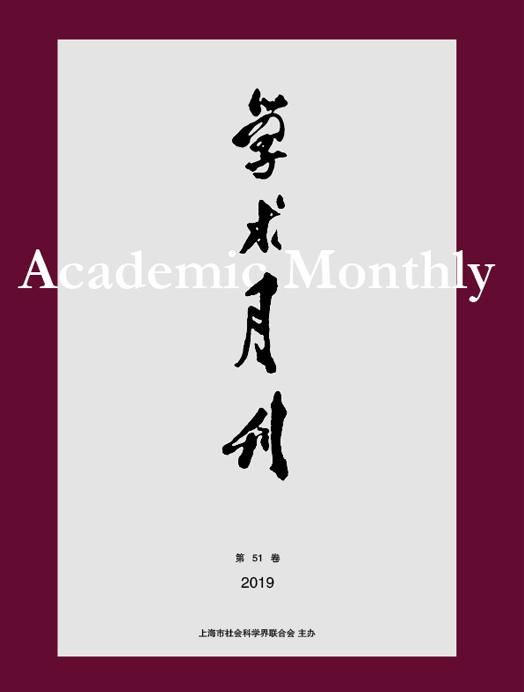-
[1]
,
,
. . Academic Monthly,
2017, 49(06): 74-82.
-
[2]
Xiang WEN
. Sociological Narratives of the Globalization of the Art Market : Performance, Mechanisms and Consequences. Academic Monthly,
2022, 54(8): 118-128.
-
[3]
Zhibiao LIU
. Regional Market Integration and Governance Mechanism Innovation in the Yangtze River Delta. Academic Monthly,
2019, 51(10): 31-38.
-
[4]
Zhenghan CAO
, Pei ZHONG
, Jing NIE
. The Modernization of the Junxian State: How Does the Chinese Central Government Expand Its Function of Governance in Public Affairs. Academic Monthly,
2021, 53(9): 95-112.
-
[5]
,
. Industrial Policy, Firm Exit and Regional Production Efficiency Dynamics in China. Academic Monthly,
2018, 50(04): 33-45.
-
[6]
Mingming CHEN
, Yuanxing CHEN
. Representative Government and Representational Government: A Theoretical and Historical Perspective. Academic Monthly,
2021, 53(7): 78-90.
-
[7]
Juyuan CHEN
. The Writing of Confucian Classics in Eight-legged Essay in Qing Dynasty. Academic Monthly,
2023, 55(3): 22-34.
-
[8]
Ke MENG
, Chang LU
. Substantive Rationality and the Formation of Weberian Bureaucracy. Academic Monthly,
2023, 55(3): 140-150, 161.
-
[9]
Guangxin FAN
. Aristocracy and Huang Zongxi’s Ideal Political Order. Academic Monthly,
2022, 54(7): 196-203.
-
[10]
. . Academic Monthly,
2017, 49(03): 68-80.
-
[11]
XIONG Bingwan
. The System of Basic Legal Regimes for Data Market. Academic Monthly,
2024, 56(1): 102-114.
-
[12]
Yan CHENG
. Theoretical Analysis of Circulation Industry Market Governance Structure. Academic Monthly,
2019, 51(7): 56-65.
-
[13]
. . Academic Monthly,
2017, 49(07): 136-143.
-
[14]
Weili LI
. Neo-Danweism: the Nexus Politics in Contemporary Chinese Grassroots Governance Structure. Academic Monthly,
2019, 51(8): 78-88.
-
[15]
,
. . Academic Monthly,
2016, 48(10): 67-76.
-
[16]
Hongming WANG
, Jiachang MA
. Researching Democratic Centralism in the Perspective of the Chinese Revolution and World Politics. Academic Monthly,
2018, 50(10): 110-117.
-
[17]
. . Academic Monthly,
2016, 48(02): 56-65.
-
[18]
. A Depoliticized Program of Political Philosophy. Academic Monthly,
2018, 50(03): 57-65.
-
[19]
Nini KONG
. Politics of Powerful Ministers and the Political Competition in Imperial Edict Writing in the Southern Song Dynasty. Academic Monthly,
2022, 54(8): 163-174.
-
[20]
Zhongqi WANG
. Dispatched Responsibilty: An Effective Mechanism of Responsive Government Construction. Academic Monthly,
2022, 54(11): 84-95, 120.



 沪公网安备 31010102003103号
沪公网安备 31010102003103号 DownLoad:
DownLoad: